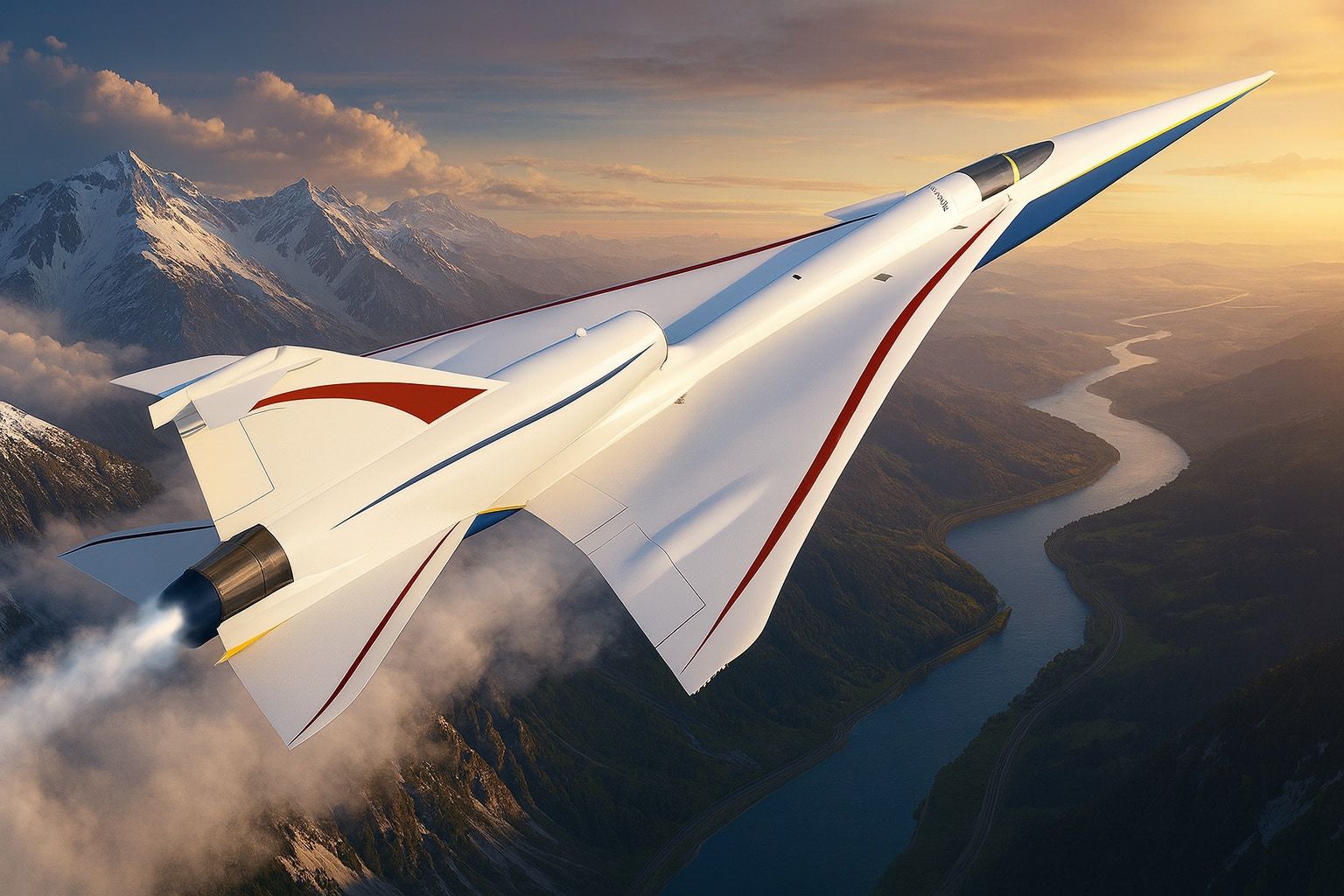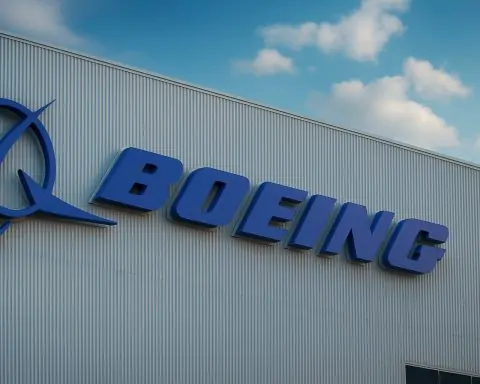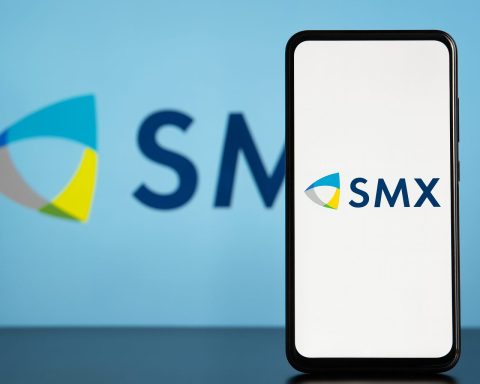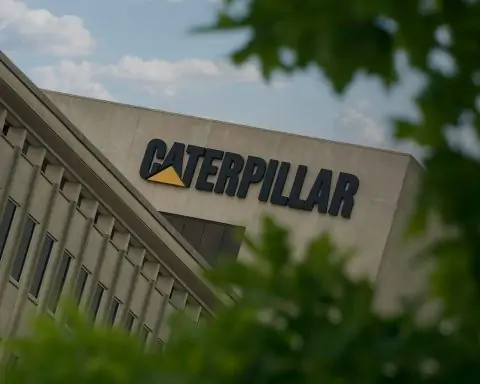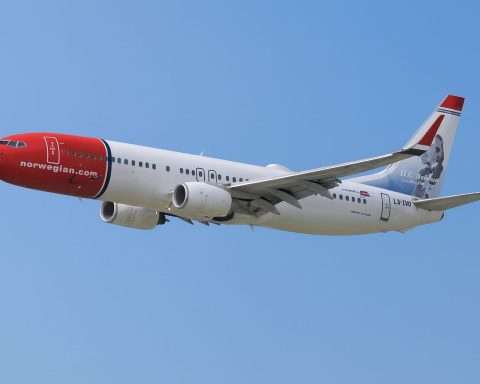- Historic Flight: NASA’s X-59 QueSST (Quiet Supersonic Technology) jet, built by Lockheed Martin’s Skunk Works in Palmdale, California, achieved its maiden flight on Oct. 28, 2025 [1]. This experimental single-seat aircraft is designed to fly at about Mach 1.4 (~925 mph) at ~59,000 ft, but with a unique needle-like profile that “is designed to reduce… shock waves so the perceived sound is little more than a thump” [2].
- Quiet Boom Innovation: The X-59 is intended to turn the traditional sonic boom into a faint “thump,” potentially allowing supersonic flights over land. Lockheed’s team describes it as producing a “quiet thump” instead of a loud boom [3] [4]. NASA’s tests (including full-scale wind tunnels in the US and Japan) confirm the design behaves as predicted.
- California Innovation: Governor Gavin Newsom highlighted the X-59 as evidence of California’s aerospace leadership. He named it the “Coolest Thing Made in California” for 2025 [5], praising the jet as exemplifying the state’s “creativity, ingenuity and manufacturing excellence” [6]. The contest – part of California Manufacturing Month – drew over 200,000 votes and showcased the state’s high-tech industry. Newsom’s office noted that the X-59’s low-boom design “is shaping the future of aviation” [7].
- Regulatory Impact: Data from the X-59 flights will directly influence FAA policy. Under a June 2025 White House order, the FAA is moving to lift its long-standing ban on civil supersonic flight over land. The new rule will be noise-based, and NASA will use X-59 test data to help write it [8] [9]. As one press release explained, the X-59’s community noise measurements “will provide NASA with the critical data required to help approve new rules that will allow quiet commercial supersonic flight over land” [10]. In short, the X-59 program could unlock a new era of fast overland air travel.
- Market Context: Lockheed Martin (NYSE: LMT), the prime contractor for the X-59, saw its stock trading around $486.91 on Oct. 27, 2025 [11]. Earlier in October the shares briefly rallied to about $504, up ~23% from a year-low ~$410 [12], buoyed by strong defense orders. LMT ended Q2 2025 with a record $166.5 billion backlog [13]. Wall Street analysts forecast roughly 5% revenue growth in 2025 and ~4% in 2026 [14], reflecting steady defense budgets. Lockheed also pays a ~2.7% dividend, and the company has authorized new share buybacks. These factors all help explain why investors remain optimistic about programs like the X-59.
- Tech Partnerships: Industry partners are deeply involved. For example, Cleveland-based Wolf Advanced Technology is supplying high-performance video processors for the X-59’s advanced cockpit. The plane uses an External Vision System (XVS) – a bank of forward-looking cameras replacing the windshield – to compensate for its long, pointed nose. Wolf notes its rugged video modules provide the pilot with “clear, real-time vision at supersonic speeds” [15]. (This forward cockpit design is needed because the elongated nose blocks the pilot’s forward view.) The X-59 program also involves international testing partners (NASA and Japan’s JAXA have cross-checked wind-tunnel data), and Boeing has assisted with test planning [16] [17].
California Celebrates a Supersonic Breakthrough
Governor Newsom used the X-59 as a showcase for the state’s advanced manufacturing. In an Oct. 27 press release, he proclaimed the Lockheed-built jet the “Coolest Thing Made in California” for 2025 [18]. He noted that this quiet supersonic aircraft “exemplifies” California’s “unmatched creativity, ingenuity and manufacturing excellence” [19]. The state-sponsored contest (whose finalists included a Sacramento-built train and an Alameda solar vessel) was a public vote on October’s Manufacturing Month. Newsom’s announcement highlighted that the X-59 was “designed to separate shockwaves and quiet the disruptive sonic boom that has long limited supersonic travel”, saying the project “is shaping the future of aviation” [20]. The release emphasized that quiet supersonic flights could one day let passengers reach any world destination in “half the time it takes today” [21] – underscoring the economic and travel-time gains at stake.
Quiet Boom Tech Behind the X-59
The X-59 (also known as the QUEiet Supersonic SuperSonic Technology or QueSST demonstrator) is a unique aircraft. Its 99-foot-long frame and lengthened nose are carefully shaped to control how pressure waves form at supersonic speed. As NASA explains, when jets exceed Mach 1 they normally create two merged shock waves (the classic sonic boom). The X-59’s shape “is designed to reduce these shock waves, so the perceived sound is little more than a thump – if you hear anything at all” [22]. In other words, it should make a very gentle “boom”.
Numerous tests have validated this design. A 1/60th-scale model of the X-59 was flown in supersonic wind tunnels in the U.S. and in Japan. NASA Aeronautics researcher Melissa Carter noted that using the same model in both facilities “improve[s] our certainty in the data obtained” on airflow and pressure behavior [23]. Those tunnel trials confirmed that the jet’s long nose prevents the shocks from coalescing into a loud noise. In short, engineers expect the X-59 to fly faster than sound (about Mach 1.42, or ~1,510 km/h) without a disruptive boom.
Inside, the X-59’s forward cockpit has no windshield. Instead it uses an XVS (External Vision System): a set of high-definition cameras and displays. Wolf Advanced Technology notes that its GPU-accelerated video computers power the XVS, providing pilots with “clear, real-time vision at supersonic speeds” [24]. This camera-based cockpit is critical because the long nose impedes the pilot’s natural view. Wolf’s involvement illustrates the high-tech supply chain behind the X-59, where specialized computing modules support NASA’s cutting-edge avionics.
First Flight and Data Collection
After years of delays, the X-59 finally flew on Oct. 28, 2025 [25]. The Aviationist reports that NASA test pilot Nils Larson took the jet on its first sortie at Palmdale’s Air Force Plant 42 late Tuesday afternoon [26]. This inaugural flight was deliberately limited: NASA had publicly stated it would be a “lower-altitude loop at about 240 mph (210 knots) and around 12,000 ft” [27]. That means the X-59 remained well below supersonic speeds for its maiden sortie, allowing engineers to verify basic systems and handling without risk. Indeed, Larson described first flying “just borrowing it for an hour or two, then bringing it back”, reflecting the cautious approach [28] (with the chief engineer’s reassurance).
Even so, this flight is a key milestone. As NASA notes, it “kicks off a first phase of flight testing focused on verifying the aircraft’s airworthiness and safety” [29]. In practice, flight-test teams will collect 60 different streams of data with over 20,000 parameters onboard [30] (engine readings, controls, pressures, etc.). Instrumentation engineer Shedrick Bessent remarked, “We record 60 different streams of data… before we even take off it’s reassuring to know the system has already seen more than 200 days of work” [31]. All that telemetry will confirm that the propulsion, flight controls, environmental systems, and safety gear (including redundant hydraulics and an Air Force T-38 ejection seat) are functioning perfectly before pushing the jet to higher altitudes and speeds.
Engineers have already plotted the next steps. The first flight’s loop was subsonic, but the plan is to gradually climb and extend range before any supersonic runs. According to a recent analysis, “engineers are mapping out the maiden flight… which will involve a gradual climb and subsonic loop before later tests push to Mach 1.4” [32]. In other words, future flights will eventually take the X-59 up to its target speed of Mach 1.4 and high altitude (around 59,000 ft [33]) once the jet has proven safe at slower speeds.
Regulatory and Commercial Implications
NASA’s goal is not just a cool tech demo – it’s to support a regulatory shift. Currently, a civilian ban on overland supersonic flight means no company can market Mach-1+ service on normal routes. However, the Biden administration has directed the FAA to replace that ban with noise-based standards. The Aviationist reports that “the FAA is preparing to replace the decades-old ban with new noise-based certification standards” [34], following a June 2025 Executive Order to allow overland supersonic flights for civilian planes. The X-59’s flight data will be the evidence base for those standards. Each test flight will collect community noise feedback and precise measurements, which NASA will then share with regulators and industry.
This has major commercial potential. If regulators approve quiet sonic rules, manufacturers could finally build civil supersonic airliners. The X-59 is often described as clearing the way for the return of supersonic transport. As Newsom’s release put it, successful testing “could unlock a new global market for aircraft manufacturers and enable passengers to travel anywhere in the world in half the time it takes today” [35]. In practical terms, a coast-to-coast U.S. flight that now takes 5–6 hours could be cut to ~2.5–3 hours at Mach 1.4. Companies like Boom Supersonic and Spike Aerospace have been eyeing this market for years; NASA’s demonstration could help make it real.
Market, Stock and Forecast
The X-59 also matters to investors. Lockheed Martin’s fortunes are closely tied to its defense and aerospace projects. In late October 2025 the stock was trading around $487 [36]. (It had hit about $504 on Oct. 3, a 23% jump from the ~$410 low earlier in 2025 [37].) Analysts note that Lockheed’s recovery stems from its huge backlog of orders and steady demand for military tech. The company reported a $166.5 billion backlog at the end of Q2 2025 [38], roughly 2½ years of revenue. That gives Wall Street confidence; indeed analysts forecast 5% revenue growth for 2025 and another ~4% for 2026 [39]. Even after accounting for one-time charges earlier this year, Lockheed’s sales guidance (around $74 billion for 2025) remains intact [40].
Overall, market observers see Lockheed as on track to fulfill its commitments while investing in future tech like the X-59. The stock’s modest pullback from this year’s highs partly reflects geopolitical uncertainties, but the newly signed F-35 contracts, missile deals, and space programs (e.g. Orion, GPS satellites) have bolstered the outlook. For current and potential investors, the X-59’s progress is a positive signal: it underscores Skunk Works’ innovation and adds momentum to a larger portfolio of programs. Veteran aerospace analyst Guy Norris (Aviation Week) noted that with Skunk Works leading the effort, “the X-59’s impending first flight will mark an aerospace milestone demonstrating Lockheed’s continued innovation in cutting-edge flight technology.” [41]
Outlook – Quiet Skies Ahead?
With the first flight complete, attention now turns to the test program. Over the coming months, NASA will conduct more flights – gradually increasing speed and altitude – each time checking the noise signature. If all goes well, by 2026 the X-59 could reach supersonic cruise and gather community feedback (the jet has sensors to record how loud it is on the ground). That feedback, combined with the instrumentation data (over 20,000 parameters were recorded even on early flights [42]), will be presented to the FAA and ICAO. NASA’s hope is that with this evidence, regulators worldwide will be comfortable lifting bans and certifying new quiet-sonic airplanes.
In summary, the X-59 program ties together aerospace engineering, Silicon Valley–style innovation, and policy change. It has already delivered a California manufacturing success story – earning the title of “Coolest Thing Made in California” [43] – and now it is delivering on its test schedule. As Mark Walsh, a senior NASA technologist, put it in June 2025, the aircraft represents “the centerpiece of NASA’s mission to gather information intended to help enable a new era of commercial faster-than-sound air travel over land” [44]. If the data from this week’s flight and future tests confirm the X-59’s quiet-boom promise, we may soon see development of new business jets and airliners that zip across continents at twice today’s speeds – and do so without the classic sonic boom.
Sources: Official California press release [45] [46]; NASA/Aviationist coverage of X-59 tests [47] [48] [49] [50]; industry reports including Lockheed Martin news roundup [51] [52]; Wolf Advanced Technology press [53]; stock data from WallStreetZen [54] and analysis from TS2.Tech [55], among others.
References
1. theaviationist.com, 2. www.nasa.gov, 3. ts2.tech, 4. www.nasa.gov, 5. www.gov.ca.gov, 6. www.gov.ca.gov, 7. www.gov.ca.gov, 8. theaviationist.com, 9. www.gov.ca.gov, 10. www.gov.ca.gov, 11. www.wallstreetzen.com, 12. ts2.tech, 13. ts2.tech, 14. ts2.tech, 15. www.unmannedsystemstechnology.com, 16. www.nasa.gov, 17. www.nasa.gov, 18. www.gov.ca.gov, 19. www.gov.ca.gov, 20. www.gov.ca.gov, 21. www.gov.ca.gov, 22. www.nasa.gov, 23. www.nasa.gov, 24. www.unmannedsystemstechnology.com, 25. theaviationist.com, 26. theaviationist.com, 27. theaviationist.com, 28. theaviationist.com, 29. theaviationist.com, 30. theaviationist.com, 31. theaviationist.com, 32. ts2.tech, 33. ts2.tech, 34. theaviationist.com, 35. www.gov.ca.gov, 36. www.wallstreetzen.com, 37. ts2.tech, 38. ts2.tech, 39. ts2.tech, 40. ts2.tech, 41. ts2.tech, 42. theaviationist.com, 43. www.gov.ca.gov, 44. www.nasa.gov, 45. www.gov.ca.gov, 46. www.gov.ca.gov, 47. www.nasa.gov, 48. theaviationist.com, 49. theaviationist.com, 50. theaviationist.com, 51. ts2.tech, 52. ts2.tech, 53. www.unmannedsystemstechnology.com, 54. www.wallstreetzen.com, 55. ts2.tech
